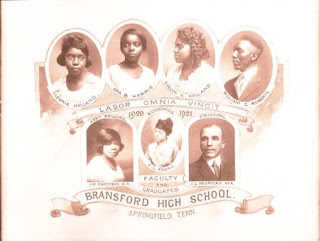Many genealogists have inherited their family member's documents, books, photographs and other genealogical materials. When it comes to the books we have inherited, I hope that everyone reading this blog post takes the time to search through all the books you are given to make sure to retrieve any scrap of paper, newspaper clipping, photo or pressed flowers that your family member put in those books. Even if the books you received are not genealogical in nature, search through them anyway. You just never know what you might find in their pages.
Now, let's talk about preserving pressed flowers. Most of the time when a genealogist encounters these items in books they are brittle, fragile and falling apart. It can be a challenge to remove these items in one piece and transfer them to a medium that will protect and preserve these precious family items.
First and foremost, make sure your hands are clean and free of any lotions or hand creams. The chemicals in these lotions can adversely affect the pressed items. There is no need to wear gloves, in fact, it is preferred that gloves not be used in this instance. The reason being, when gloves are worn, they remove the textile sensation you need to feel the items. It is important to feel how you are handling the items so that they are not damaged.
 |
| Example of Pressed Flowers |
If you don't feel comfortable picking up the pressed items with your hands, use a plastic or rubber spatula. Do not use metal spatulas as their sharp edges could damage the items. Be sure the head of the spatula is as big as the item so that all if it can be picked up and transferred at the same time. An ordinary kitchen egg turner or spatula that you already have will do just fine for this project. If you find that any part of the item is stuck or adhered to the page, gently use the spatula to separate the item. I have found that most of the time pressed flowers and leaves are not stuck to pages but can be removed quite easily.
Two options that I can recommend preserving and protecting your pressed flowers, leaves and ferns are:
Specimen Mounting Boxes
These boxes are easy to use and can be purchased at any of the online archival materials stores (see list below), the local hobby store, taxidermy stores and at Amazon.com. These types of mounting boxes are used for pressed flowers, leaves, preserving butterflies and other zoological items. These boxes are great to use if you plan to display the items.
 |
| Example Specimen Mounting Box from Gaylord Archival |
Suspension Boxes
These boxes are also easy to use and will protect the pressed items once they are removed from the books. These boxes can also be purchased at any of the online archival materials store and at any hobby store. The clear, polystyrene box has flexible membranes in the top and bottom which conform to the item, holding it firmly in place. The nice thing about these particular boxes is they can be held and the items inside can be viewed from all sides. These suspension boxes also come in many different sizes to accommodate the different sizes of flowers, leaves and other pressed items.
 |
| Example of Suspension Boxes from Gaylord Archival |
Remember, your ancestor or family member took the time to lay those flowers, leaves and ferns in books to be pressed. They were making a day of remembrance, remembering a family member or just appreciating the foliage itself. These items meant something to them at the time and it should mean something to us today. Sadly, many times there are no notes or writings to tell us exactly why our ancestors pressed these items. We are left to guess at their significance but what we can do is preserve and protect them for future generations to enjoy.
Archival Material Websites
Here is a listing of online archival materials stores. They all have online catalogs and paper catalogs that can be sent to your home. Also, be sure to sign up for email notifications because they periodically have sales and will send out email notifications:
Gaylord Archival
http://www.gaylord.com/
Hollinger Metal Edge
https://www.hollingermetaledge.com/
Light Impressions
http://www.lightimpressionsdirect.com/
University Products
https://www.universityproducts.com/
Brodart
http://www.brodart.com/
REMEMBER: IT'S NOT ALL ONLINE, CONTACT OR VISIT AN ARCHIVE TODAY!
******
Get Melissa Barker's Legacy QuickGuide on












